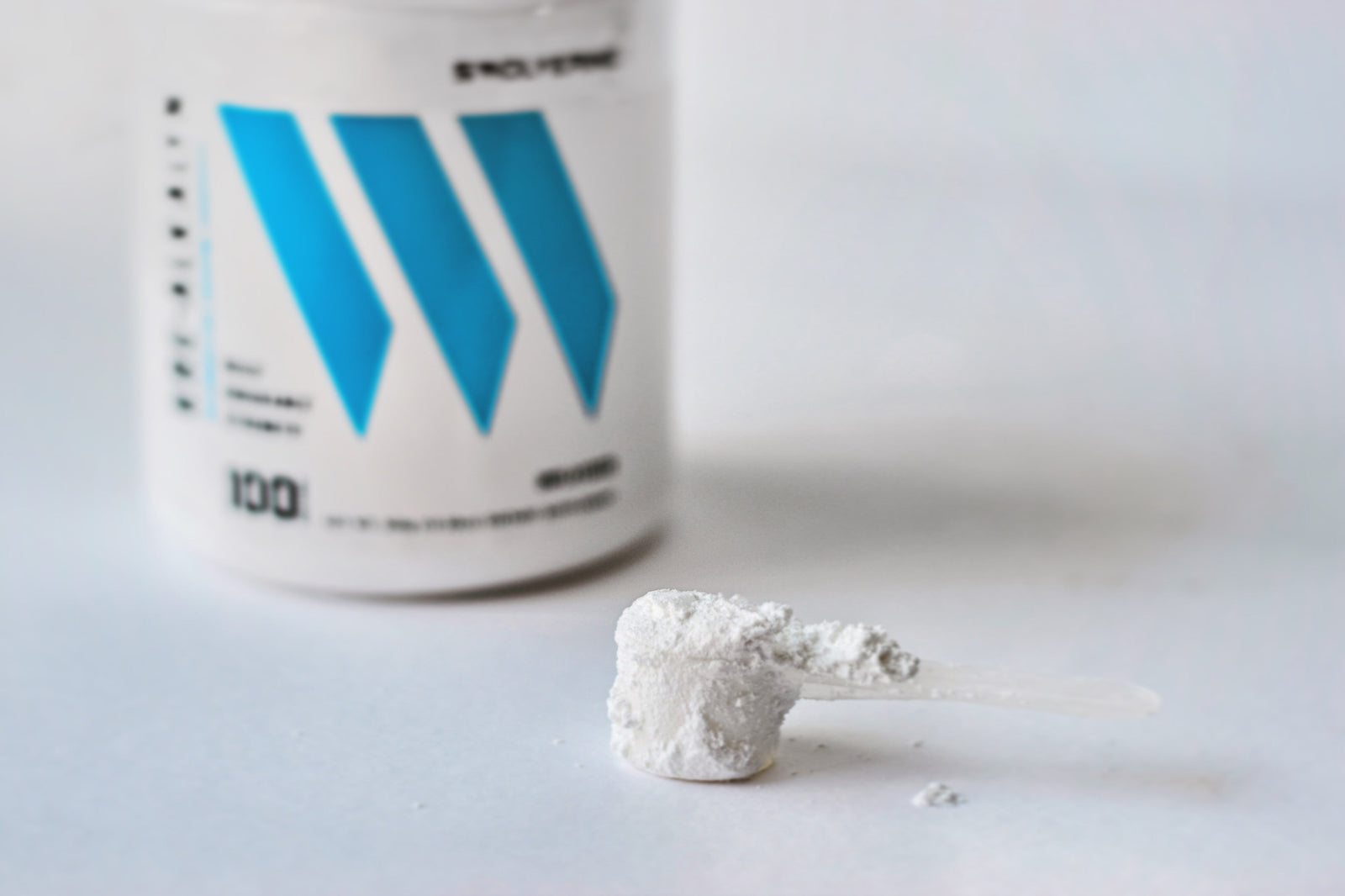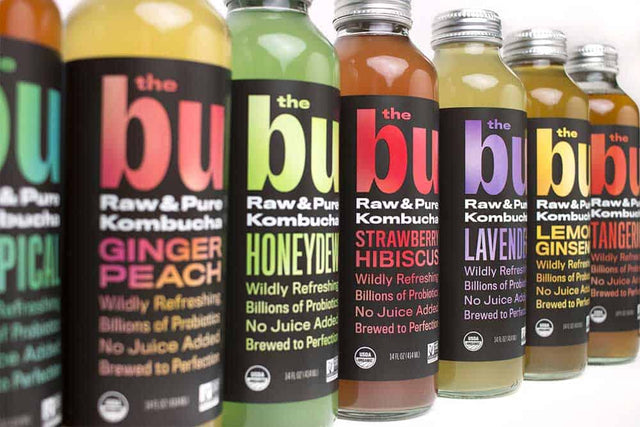My Journey with Creatine: From Bloating to Better Gains
How Creatine Helped Me Build Strength—And Why I Switched to Kre-Alkalyn
I first started taking creatine when I was in college. I wanted to gain some muscle mass, look more fit, and of course be stronger. After researching a bit, creatine seemed like the supplement I was looking for. It had numerous studies that proved it could increase strength and power, and it seemed like the perfect addition to help me reach my goals.
Creatine monohydrate is one of the most well-researched sports supplements on the market, shown to improve strength, lean muscle mass, and high-intensity performance (Buford et al., 2007).
Every day after class, I would go to the gym, take out my shaker bottle, and toss in a scoop of creatine—hoping to get bigger, stronger, and faster at a much quicker rate. After a couple of weeks, it seemed like everything was working. I was stronger and had more energy, but instead of getting leaner, I was bloated and puffy. Even worse, during my CrossFit classes, I would cramp up and struggle to finish workouts.
Bloating is a common side effect of creatine monohydrate due to increased water retention in the muscles (Antonio et al., 2003).
Despite the performance boost, I eventually stopped taking creatine monohydrate. It worked—but I didn’t love how it made me feel. That is, until I found out about Kre-Alkalyn.
What Is Kre-Alkalyn?
A Buffered Form of Creatine That Solves Bloating, Cramping, and Water Retention
Kre-Alkalyn is a pH-corrected or “buffered” form of creatine. It was developed to address the common side effects associated with creatine monohydrate—bloating, water retention, and cramping—caused by the conversion of creatine into creatinine, a toxic by-product that forms in acidic environments like your stomach (Spillane et al., 2009).
Kre-Alkalyn is made by adding an alkaline compound such as sodium bicarbonate to micronized creatine monohydrate, raising its pH to between 7 and 14. This makes it more stable in the stomach and prevents the rapid breakdown into creatinine, increasing absorption and effectiveness.
Sodium bicarbonate also functions as a natural lactic acid buffer, helping delay muscle fatigue and improve endurance (Carr et al., 2011).
Kre-Alkalyn offers a more efficient, gentler-on-the-gut option for athletes who want results without the side effects.
Kre-Alkalyn vs. Creatine Monohydrate: Stability, pH, and Bioavailability
Why Kre-Alkalyn Requires No Loading Phase
In a study published in the International Journal of Pharmacology, researchers compared Kre-Alkalyn and creatine monohydrate for stability and conversion to creatinine. After 150 days (equivalent to five years in real time), Kre-Alkalyn showed only trace creatinine formation. Even after 180 days (six years), conversion was just 0.1%.
Meanwhile, creatine monohydrate, when dissolved in water, hits a pH of 2–3, becoming highly acidic. In this state, it rapidly converts into creatinine, reducing its bioavailability and effectiveness (Jäger et al., 2011).
Because Kre-Alkalyn resists this acidic breakdown, it requires no loading phase, making it far more convenient and user-friendly.
👉 Related Reading: How Sodium Bicarbonate Increases Endurance Capacity
What Are the Benefits of Kre-Alkalyn?
Why Kre-Alkalyn Is the Smarter Creatine for Performance, Recovery, and Results
Kre-Alkalyn offers the same muscle-building and strength-enhancing benefits as traditional creatine monohydrate—but without the uncomfortable side effects. By stabilizing the pH level and preventing creatine from converting into creatinine in the stomach, Kre-Alkalyn is more bioavailable, faster-acting, and easier to tolerate, especially for athletes who train hard and frequently.
Whether you're a weightlifter, CrossFitter, endurance athlete, or just looking to build more lean muscle, the benefits of Kre-Alkalyn go far beyond the basics.
💥 Expanded Benefits of Kre-Alkalyn:
-
Increased Strength Output
Kre-Alkalyn supports enhanced intramuscular creatine phosphate stores, which allows you to lift heavier, push harder, and recover faster between sets. -
Greater Power and Explosiveness
Especially valuable for athletes in sprint-based or high-power sports, Kre-Alkalyn helps improve fast-twitch muscle fiber recruitment, leading to better sprint times, jumps, and Olympic lifts. -
Improved Muscular Endurance
With added sodium bicarbonate, Kre-Alkalyn also works as a lactic acid buffer, helping delay the onset of fatigue and muscular burn during high-rep training or long-duration workouts. -
Enhanced VO2 Max
Studies show Kre-Alkalyn users demonstrate measurable improvements in aerobic capacity, meaning more oxygen delivery, better stamina, and increased cardiovascular performance. -
Faster Recovery
By supporting more ATP regeneration and reducing muscular inflammation, Kre-Alkalyn helps reduce soreness and speed up recovery, allowing you to train harder, more often. -
No Bloating, Cramping, or GI Distress
Unlike creatine monohydrate, Kre-Alkalyn stays stable in the stomach and doesn't convert to creatinine, which means zero water retention, no stomach upset, and better absorption. -
No Loading or Cycling Required
Take a clinically effective dose of 1.5g–3g daily, and you’ll start seeing results without the hassle of large loading doses or confusing cycling schedules.
⚖️ Kre-Alkalyn vs. Creatine Monohydrate: Comparison Table
| Feature | Kre-Alkalyn | Creatine Monohydrate |
|---|---|---|
| Chemical Structure | Buffered creatine with stabilized pH (7–14) | Creatine with low pH (2–3) prone to acidic breakdown |
| Bioavailability | High – resistant to creatinine conversion | Moderate – significant degradation into creatinine |
| Loading Phase Required | ❌ No | ✅ Yes – 20g/day for 5–7 days |
| Maintenance Dose | 1.5g–3g/day | 3g–5g/day |
| Cycling Needed | ❌ No | ✅ Yes – 1 week loading, 4–5 weeks maintenance, 1–2 weeks off |
| Bloating / Cramping | ❌ None reported | ✅ Common in sensitive individuals |
| Water Retention | ❌ No | ✅ Yes |
| GI Distress | ❌ None | ✅ Possible bloating or stomach discomfort |
| Improves VO2 Max | ✅ Yes – shown to significantly increase in clinical studies | ⚠️ Limited evidence |
| Supports ATP Production | ✅ Yes – highly efficient | ✅ Yes – but less stable in stomach |
| Lactic Acid Buffering | ✅ Yes – due to added sodium bicarbonate | ❌ No |
| Clinical Performance Trials | ✅ Positive – endurance, strength, and fat loss improvements in elite athletes | ✅ Positive – strength and lean mass improvements |
| Ideal For | Athletes seeking peak power, performance, and easy digestion | Budget-conscious users seeking proven strength support |
| Side Effect-Free Performance | ✅ Yes | ⚠️ Not always – bloating and water retention are common |
What Are the Differences Between Kre-Alkalyn and Creatine Monohydrate?
Comparing Dosing, Side Effects, Bioavailability, and Real-World Performance
⚖️ Key Differences:
1. Side Effects & Bioavailability
-
Creatine Monohydrate often causes bloating and water retention due to conversion into creatinine in acidic environments.
-
Kre-Alkalyn is pH-buffered, preventing this breakdown and making it more bioavailable with no known toxicity (Spillane et al., 2009).
2. Loading Phase
-
Creatine Monohydrate requires a loading phase of 20g/day for 5–7 days.
-
Kre-Alkalyn does not require loading, and just 1.5–3g daily is effective.
3. Cycling Protocol
-
Creatine Monohydrate is commonly cycled (load → maintain → off).
-
Kre-Alkalyn is safe for continuous use, with no cycling required.
4. Performance & VO2 Max
-
In a study by Bioceuticals Research, 12 NFL players taking 1.5g of Kre-Alkalyn/day for 6 weeks reported:
-
Increased stamina
-
More energy
-
Lower body fat
([Data on file, Bioceuticals Research Institute, 2009])
-
-
In a 60-day Olympic weightlifting trial, Kre-Alkalyn users had a 28.25% greater increase in total lift volume compared to creatine monohydrate—without bloating or cramps (Jäger et al., 2011).
-
A 16-week study at Greenberg Medical Center comparing 750mg/day of Kre-Alkalyn vs. Creatine Monohydrate in Olympic soccer players showed:
-
No significant difference in lean mass
-
Significantly higher VO2 max in the Kre-Alkalyn group
-
👉 Related Reading: Kre-Alkalyn vs. Creatine Monohydrate: Which One Is Better?
What Is the Clinically Effective Dose of Kre-Alkalyn?
Research suggests the effective dose of Kre-Alkalyn ranges from 1.5–3g per day, taken once or twice daily for optimal strength, power, and endurance outcomes.
Why Kre-Alkalyn Is My Creatine Superhero: The Takeaway
When I switched from creatine monohydrate to Kre-Alkalyn, the side effects disappeared—no more bloating, cramping, or uncomfortable water retention. But more importantly, I hit new PRs, saw better recovery, and increased my endurance.
With no need to load or cycle, Kre-Alkalyn is the smarter, cleaner, and more efficient creatine solution. If you're tired of the monohydrate struggle and want a creatine that works without the baggage, Kre-Alkalyn might just be your superhero too.







